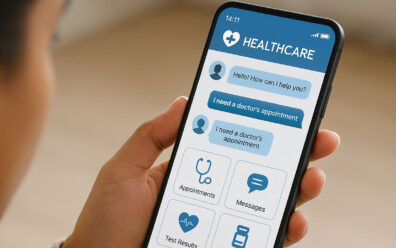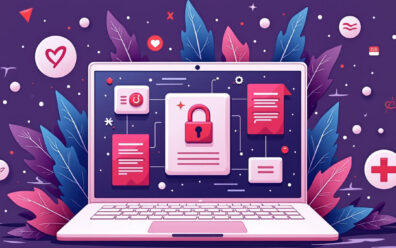Contact Center Scalability Contact Center Security Contact Center Technology Contact-Center Outsourcing Customer Experience Inbound Contact Center Industry Insights On Demand Contact Center6-minute read
5 Essential Contact Center Components
As experts in the delivery of on-demand contact center services, we never tire of explaining the ins and outs of how they work and what they can offer businesses. To that end, we’ve recently explored the basics of the modern contact center — including how to know whether your business needs one, and, if so, what type of center is best suited to meet your specific operational needs.
Now it’s time to look at the next step. After you’ve decided that your company should have a customer service center—whether that means:
- Implementing your own, partnering with a third party to set one up on your behalf.
- Or hiring the services of a dedicated, virtual contact center solutions provider.
Either way, it’s time to make sure that you’re getting all the contact center components necessary to meet your goals.
It’s true that some components will vary, depending on your unique business needs, such as what communications channel is given the most emphasis, or what level of staffing corresponds to your busiest times of the day, week or year. But it’s also true that some factors should be in place for all outsourced call center services, no matter what type or size of business they serve.
So, whether you’re building your own customer communications network, or paying someone to do it for you, make sure you’re getting the most out of your investment: Double-check to make sure the following five contact center components are in place.
5 Crucial Contact Center Components
#1: Emphasis on Top-of-the-Line Phone Communications

Never underestimate the importance of phone-based communications.
Source: www.shutterstock.com.
Granted, the modern contact center is made up of much more than just traditional phone systems—often encompassing a huge variety of communications channels that includes instant messaging, social media management, in-app chat functionality, email marketing and many, many others. That doesn’t mean, however, that the importance of phone-based communications should be underestimated.
“70% of mobile searchers prefer to call a business directly from the list of search results.” Share on X
According to a 2018 news release from New Voice Media, 75% of consumers still prefer to speak to a live agent when they contact a business, often by a basic, phone-call setup. And for today’s tech-savvy consumer, this requires more than just an old-fashioned landline: Research from Google shows 70% of mobile searchers prefer to call a business directly from the list of search results.
“75% of consumers still prefer to speak to a live agent when they contact a business, often by a basic, phone-call setup.” Share on X
So, not only should you still give your customers the option to reach you via phone, but you should also empower them to do so in a number of ways—such as a one-click-call option in search results or on your website.
Action Item: When you’re setting up a contact center, phone-based tech needs to be at the top of your list, in a way that uses the latest technology, such as VoIP tech directly integrated into your website.
#2: Capacity for Email and Text-based Communications

As many as three in every four Millennials prefer to communicate via text rather than make a phone call.
Source: www.shutterstock.com.
But as important as it is to ensure an emphasis on phone-based interactions, it would be a mistake to focus only on that aspect of customer communications. Particularly with younger generations, the phone is, at best, a secondary mode of communication: As 2016 news release from OpenMarket reveals, as many as three in every four Millennials prefer to communicate via text rather than make a phone call.
And for this same generation, email remains more popular than talking via the phone, per a Forbes report on Millennials’ communications preferences. And as the buying power of the Millennials continues to dominate U.S. commerce, any customer service center should make it a priority to accommodate their preferences.
Action Item: : Exactly which of these channels should be your main focus remains subjective; “it pays to know the advantages and disadvantages of each,” writes Larry Alton in the Forbes report. “Adjust your communication style to suit the generation you plan to speak with”—and make sure that your contact center is set up in a way that lets you engage with them all.
Adjust your communication style to suit the generation you plan to speak with”—and make sure that your contact center is set up in a way that lets you engage with them all.
#3: Cutting-edge Technology: Hardware, Software and Security

Yesterday’s systems simply won’t do if you’re trying to win over demanding customers, particularly young ones.
Source: www.shutterstock.com.
By this point, it should be crystal clear that a modern contact center needs to handle an advanced variety of communications—which, in turn, requires an array of technology to accommodate all of these diverse channels. This means shoring up your center with the technology that agents need to communicate quickly and effectively via web browser, internet-enabled phone or any other channel.
And this requires making use of the latest, and most sophisticated, communications software, as well as the hardware on which it runs. Yesterday’s systems simply won’t do if you’re trying to win over demanding customers, particularly young ones. And all of this equipment needs continuous updating to make sure the latest version is in use, and that its security features are as up to date as possible.
Action Item: Setting up the technological foundation needed to run a top-of-the-line contact center can be challenging, given the expense and the expertise required. Before making this investment, determine whether partnering with an on-demand contact center service provider will be a more cost-effective route.
#4: Tech-savvy IT Personnel and Customer-friendly Agents

Technology problems requires employing IT experts who can make sure that your operations run smoothly and securely at all times.
Source: www.shutterstock.com.
All of this strategy regarding customer service channels, and technology to base it on, amounts to very little if you don’t also have the personnel on hand to put it to its best possible use. That means employing IT experts who can make sure that your operations run smoothly and securely at all times, and service agents who bring the highest standards of customer care to your efforts.
Action Item: In an era when highly skilled agents are in huge demand—and can therefore demand top dollar—staffing a team of onsite agents can be a challenge. Before you start crafting a hiring plan, consult an on-demand service provider to gauge whether using a virtual contact center will be more cost-effective than hiring a full-time team of agents and IT pros.
#5: Data Tracking, Reporting and Performance Monitoring

Make sure that all of the tech infrastructure in your contact center includes the capability for continuous monitoring and reporting.
Source: www.shutterstock.com.
One of the chief benefits you get from equipping your contact center with the latest and greatest technology—beyond the obvious advantage of enabling you to interact quickly and effectively with customers on whatever channel they prefer—is the ability to track and monitor all communications. And that, in turn, gives you the power to continuously measure your performance and implement regular improvements.
This is expertise that goes beyond information technology and customer care: It means implementing a plan to measure your most important communications metrics, from the basics (such as customer hold time and agent retention) to the advanced (speech, satisfaction and cross-channel analytics). The constant monitoring of this data is crucial to continuously improve your customer service.
Action Item: Make sure that all of the tech infrastructure in your contact center includes the capability for continuous monitoring and reporting. If you’re partnering with a third party, make it clear you expect to be kept in the loop with regular updates and consulted on how to apply that data to achieve continuous improvement.
Make Sure You Have All the Call Center Components You Need: We Can Help!
Working Solutions has more than 20 years of experience helping businesses of all sizes and across many industries implement superior customer care solutions. Think of us as a partner to ensure you have all the necessary contact center components to drive customer satisfaction and loyalty—and to achieve the optimized growth that comes along with it.

Interested in learning more? We’re standing by to help. Contact us here to schedule your complimentary consultation with a Working Solutions contact center expert today.
Let's connect.
This Might Interest You...
This website uses cookies to personalize and improve your experience. Continue browsing our site if you agree to our Cookie Policy or feel free to Manage Cookies yourself.


